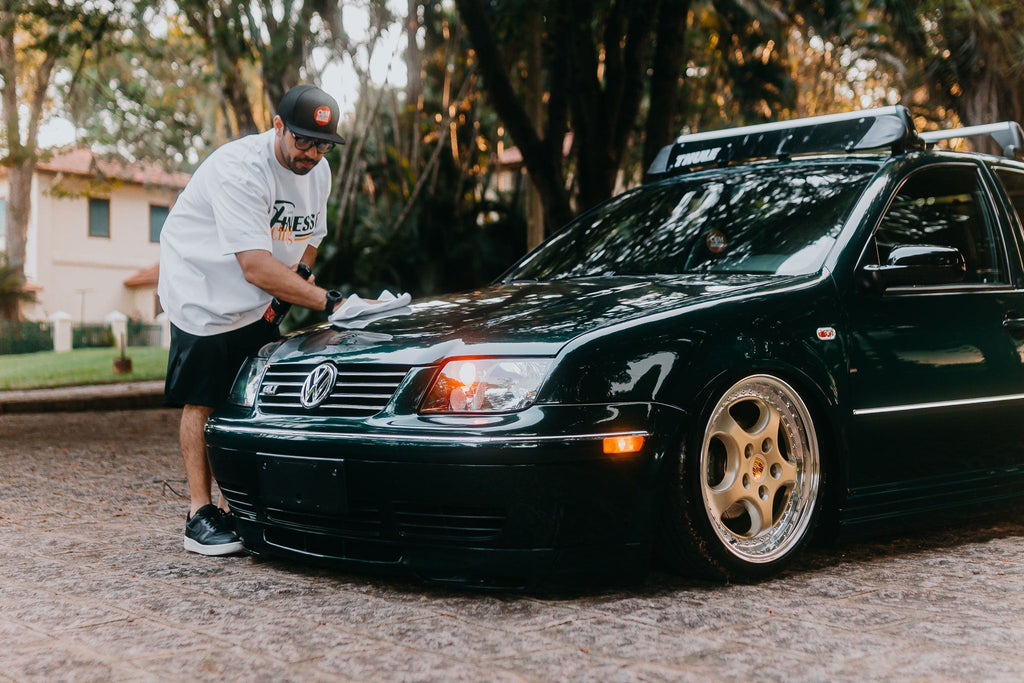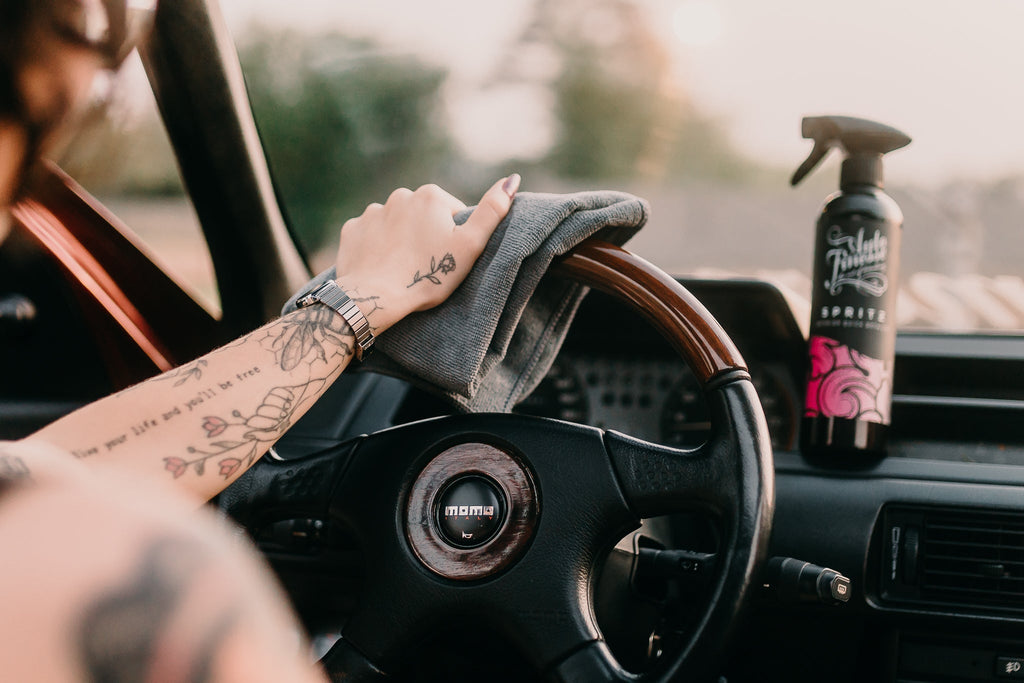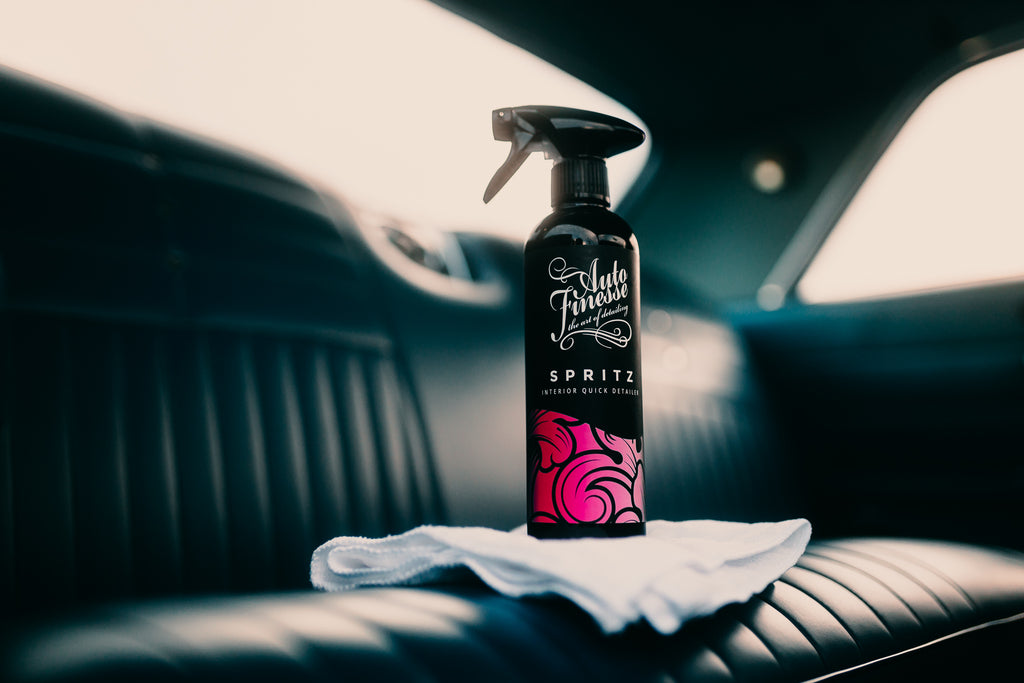So reinigen Sie Alcantara
At Auto Finesse, we recognise that while maintaining your car's exterior is crucial, the interior, particularly the cockpit, is where you spend most of your time. With the increasing use of luxurious materials like Alcantara by manufacturers, we’re here to offer some expert tips and tricks for cleaning Alcantara effectively.
Before you begin cleaning your Alcantara, it's crucial to thoroughly inspect the material. This often-overlooked step can reveal marks or areas of wear that you might not have noticed before. Identifying these spots helps you avoid causing further damage and ensures you give extra attention to any areas that need it.

Now that you've assessed the condition of your Alcantara, it's time to start cleaning. In this example, we're detailing the interior of a BMW M3 CSL, which features Alcantara on three key surfaces: the seats, steering wheel, and handbrake handle. These high-contact areas tend to become matted and dirty from regular use. Often, it's this matting effect that makes the Alcantara look dull and worn, as the fibers become flattened over time.








Auto Finesse Total is a ready to use car interior cleaner which is safe to use on all interior car surfaces. Whether you are cleaning plastic, vinyl rubber, cl... See product details More
Begin the cleaning process with a bottle of Total Interior Cleaner. This pre-diluted, low-foaming formula is ideal for Alcantara, as excessive lather isn’t necessary for effective cleaning. Lightly mist Total over the surface, but avoid over-saturating the material, as too much moisture can damage Alcantara. It's best to work in small sections, like a side bolster, headrest, or lower bolster, to ensure thorough cleaning without letting excess product dry. After misting the area, use a soft-bristle interior brush, such as our Upholstery Brush, and gently work it over the surface in back-and-forth motions to lift dirt from tight areas and crevices.








The ultimate detailing brush for cleaning interior carpets, fabrics, leather and car mats, the Auto Finesse Upholstery Brush is a kitbag essential designed to... See product details More
After working the cleaner into the surface, take a fresh microfiber cloth and gently wipe away the dirt that has been lifted from the Alcantara fibers. Use light pressure to remove the grime brought to the surface by the cleaner. Once you've wiped away the dirt, the surface should be clean and dry to the touch.

Even though the Alcantara is now clean, it might still look dirty because of the matted fibres. But don’t worry—this is a simple fix.
Use the crevice attachment on your vacuum to gently hover over the surface. A handy tip is to place your finger between the vacuum nozzle and the Alcantara to prevent direct contact. This method will lift the fibres, restoring that factory-fresh look to your seats.


While your seats may have the largest amount of Alcantara, don't forget about other interior surfaces trimmed in the same material. Typically, these include the steering wheel, gear knob, and handbrake cover. Start by inspecting these areas for any marks or stains before cleaning. However, unlike the seats, you'll need to adjust your approach. Since a detailing or upholstery brush won’t be as effective here, switch to a fresh microfibre cloth. Lightly mist the cloth with Total and gently work it around the surface you’re cleaning.










The Microfibre Work Cloth is a true car detailing staple and lends itself to a huge variety of tasks from every cleaning application and finishing process. Th... See product details More
As before, only light pressure is required, as applying too much force could further flatten the surface. After you've worked the area, you'll notice the dirt transferring onto the cloth. To finish, flip the cloth to a clean side and gently brush over the fibres to lift them back up.

Since you're using less pressure on these areas, you may need to go over them a second time to ensure they're thoroughly cleaned and restored to a factory-fresh finish.
This method, using Total and a microfibre cloth, will also work wonders on worn handbrake levers and gaiters, as demonstrated below:








